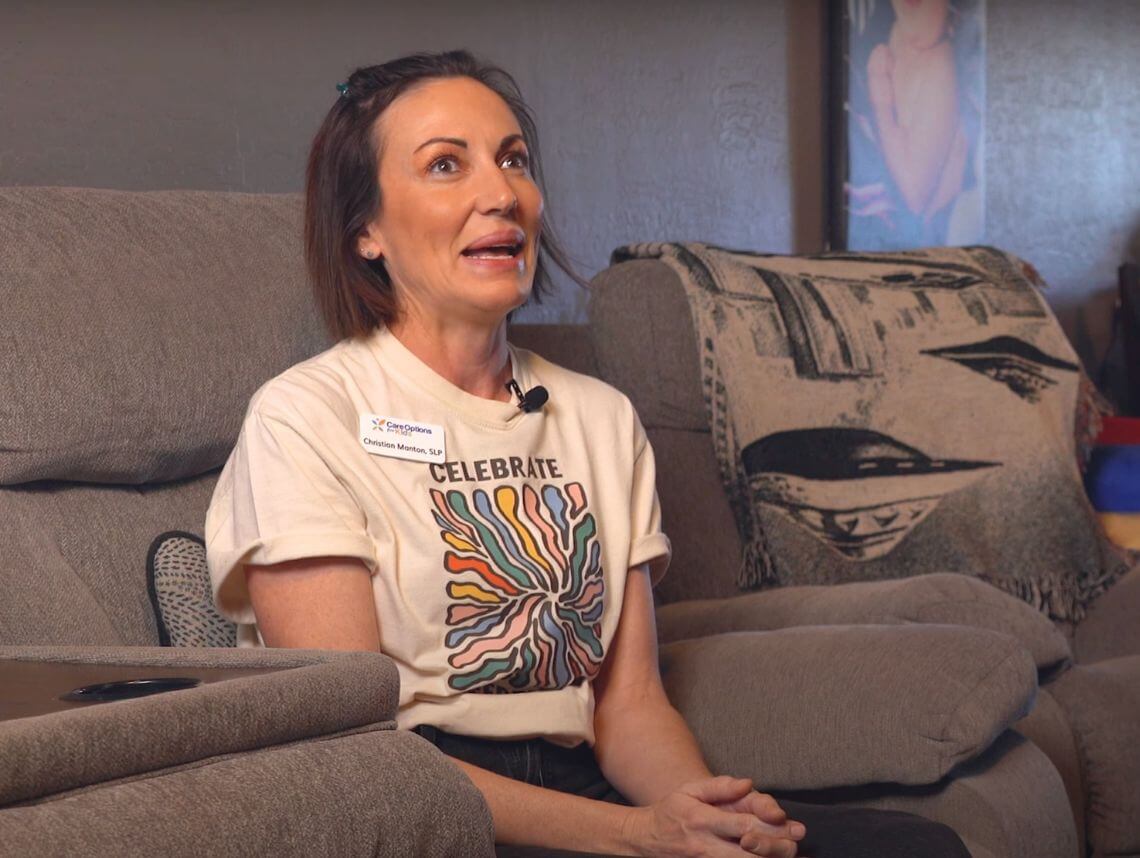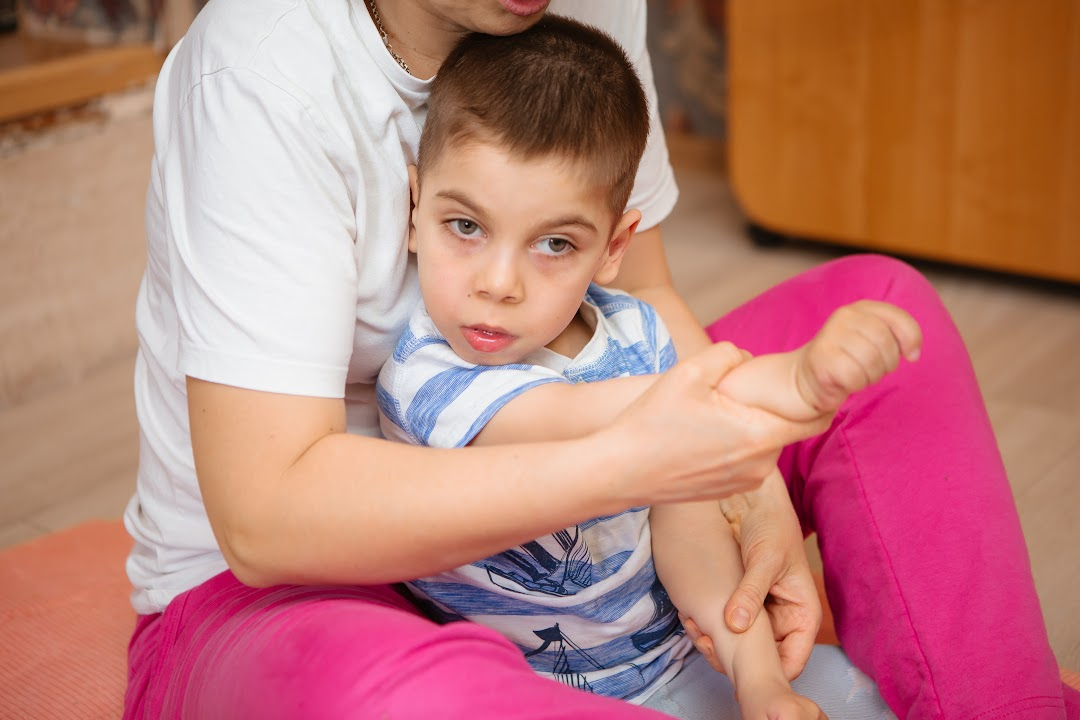Solace Blog
- Activities19
- Autism & Behavioral4
- Community154
- Early Intervention71
- Events & Giving Back20
- Extraordinary Kids22
- Family Caregiver4
- Home Care Therapy60
- News94
- Parent Articles83
- Patient Testimonial21
- Pediatric Therapy77
- Pediatric Therapy Career46
- Private Duty Nursing1
- School-Based Services1
- Telehealth Therapy27
- Tips & Advice66
Summer Reading List: Books to Inspire Therapist Growth
Cooling Off with Aquatic Therapy: Benefits and Best Practices
Sensory Activities For Kids

From School To Home: Christian’s Shift To Impactful Therapy
Speak, Listen, Connect: 6 Communication Strategies for Therapists

Physical Therapy for Cerebral Palsy
Cerebral Palsy (CP) is a neurological disorder that affects a child’s basic motor functions. It is the most common type of motor disability and impacts about 1 in 345 children, according to the Autism and Developmental Disabilities Monitoring Network.
CP has a range in terms of severity and symptoms which can lead to different and unique issues with each individual child. Some may have more of an issue with movement of the whole body while others may only have trouble with a certain function. This is all dependent on where and how much brain damage has occurred, but the core issue will always surround difficulties in relation to movement. Here are some of the main things to know about cerebral palsy in children and what treatment is available.
What Causes Cerebral Palsy?
Cerebral palsy doesn’t always have a known cause but it tends to be most common for symptoms to develop in the early stages of infancy or even in the womb. Some possible reasons for this condition include medical issues or possible infections during pregnancy, if the mother suffers a stroke while pregnant or during birth, various genetic orders or even issues that can occur during the birthing process. While CP can and does occur in full-term babies, premature births, multiple births (twins, triplets, etc.) and babies who born with a low birthweight tend to face more significant odds of having CP.
According to the CDC, there are four main types of cerebral palsy based on what area of the brain has been affected. These include:
Spastic- This is the most common type of CP that amount to around 80% of cases. Children with spastic CP have increased muscle tone which in turn leads to increased muscle stiffness and awkward and tight movements.
Dyskinetic – Dyskinetic CP leads to difficulty controlling movements. This affects the limbs and can make the act of sitting or walking a challenge. Dyskinetic CP can also sometimes affect the face which can cause the child to have a hard time with talking and swallowing.
Ataxic – Ataxic CP deals with issues of balance and coordination. Children with ataxic CP may often walk unsteadily and find coordination based tasks such as writing to be more difficult.
Mixed- Mixed CP is when there is a combination of symptoms that stem from more than one CP category. The most common mixed combination tends to be spastic and dyskinetic.
Symptoms
As stated above, each case of CP will differ from child to child, but some common symptoms that a parent can look out for are:
- Problems when trying to reach out their arms
- Difficulty sitting up or rolling
- Inflexible joints that cannot bend and stretch all the way
- A reversal in movements that the child was able to previously perform
- Movement that is slower than the children around them
- Tightening in muscles
- Trouble with coordination
- Tremors in the muscles
In addition to the physical challenges faced with CP, some other symptoms that can arise from this diagnosis are:
- Vision blindness
- Loss of hearing
- Speech challenges
- Osteoporosis
- Behavioral Issues
- Seizures
- Insomnia
- Slower than average growth
How Is Cerebral Palsy Treated?
While there is no cure for cerebral palsy, there are a wide variety of treatments and therapies available that can help children learn and grow to reach their full potential. In order to get started, the first step is to have the child evaluated and get an official diagnosis.
To get a confirmed diagnosis of CP, parents usually need to wait until their child is at least 6 to 12 months old and able to compare against traditional developmental milestones. Once they are able to get a better idea of what is going on, the first thing a doctor will recommend would be a neurological exam to observe the child’s reflexes and overall motor functions. Following this exam, an MRI, CT scan and Electroencephalogram (EEG) tests may be ordered to get an in depth look at the child’s organs, bones, tissues as well as brain activity. Also during this time, various studies can also be done such as gait lab analysis which observes the child’s walking patterns as well as feeding studies to see if there are any problems with eating and swallowing. While the road to a diagnosis can feel like a lot for both child and parent, it is a vital step in the process to ensure the best methods of treatment and therapy for the child’s individual needs.
After an official diagnosis has been made a doctor will typically make a referral for the child and their parents to start physical therapy as well as any other treatments that may need to be addressed.
What Are Physical Therapy Sessions Like?
Physical therapy is the most common therapy a child with CP will have. Because the primary issues of CP are directly related to movement, physical therapy is essential to help the child meet their developmental goals.
When first starting physical therapy, the physical therapist (PT) will first look over the child’s full medical history and will typically conduct a variety of movement tests with the child to determine where attention should be focused. During these tests, the PT may study the child’s walking movements, flexibility, posture, reflexes, and balance. In addition to the body and movement tests, they may go further and assess things like cognitive functioning, breathing, and sensory integration to better understand the whole picture. Following the evaluation, the therapist will then create an individualized plan of care that will include goals and treatment plans based off the child’s specific needs and environment.
Once an official plan is in place, the real work can begin. The physical therapist will use their sessions to both work on immediate needs as well as teaching skills that can be done outside of therapy to accelerate progress. The PT will perform body manipulations on the child during various exercises, will utilize specific stretches to help improve flexibility, as well as engage in strength training games, posturing and balance activities. The overall goal is to create a supportive and well-rounded approach that addresses the child’s needs, builds upon their capabilities and improves function without causing any further pain or discomfort.
Other Therapies That Work With Physical Therapy for CP
While physical therapy will usually be the most common type of therapy that is recommended for a child with CP, depending on what other symptoms are involved, other types of therapies may be needed to round out a plan of action that addresses all needs. Some of the most prevalent would be occupational therapy, which helps a child gain independence through navigating tasks in day-to-day living, speech therapy that works on any type of speech impairment or swallowing function such as what children with dyskinetic CP can often face, or recreational therapy that uses various types of physical activities such as sports to boost the progress of motor skills as well as improve overall confidence and health.
Solace Physical Therapy
A key component to successful outcomes during therapy is making sure that the child feels safe and comfortable during their sessions. This is why having therapy occur in the home provides the advantage of starting out in a familiar location. This puts the child at ease and avoids the tense feelings that can occur with being in clinical environment. In addition to this, it allows the families to take part and be involved in the process to better adapt the skills learned to the child’s daily life and family dynamics. At Solace, our highly trained physical therapists bring the clinic to your living room to make sure that your child and your family is in a safe and supportive environment to make sure that everyone is getting the most out of the therapy sessions. In-home therapy can also help to reduce the stress of preparing for, traveling to, and then returning home from therapy, which allows your child to focus on the treatment and what was learned, making therapy something that is looked forward to rather than dreaded. If you have any questions about what Solace In-Home therapy could offer your child with CP, please do not hesitate to reach out to our trained therapists.
Share this Post